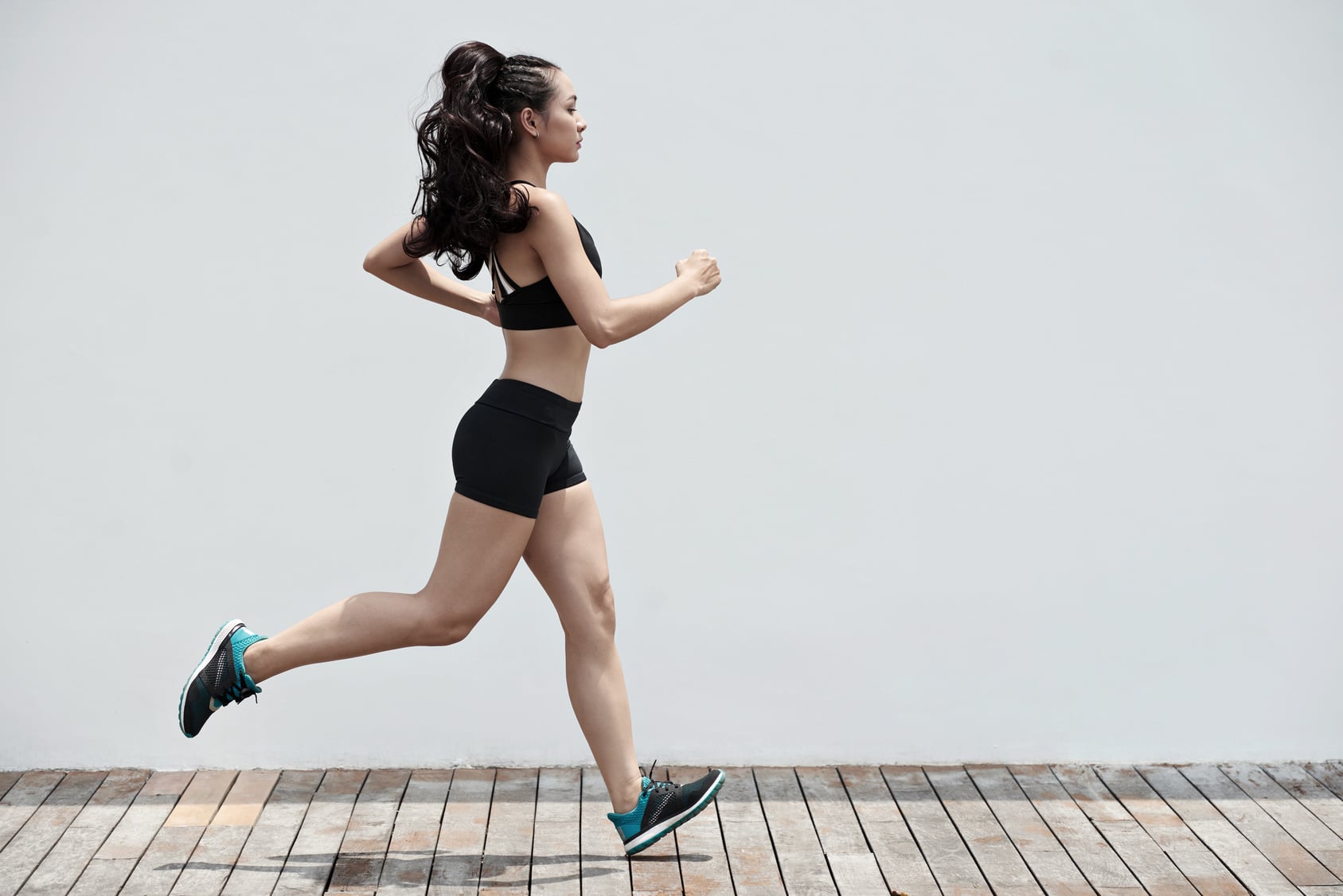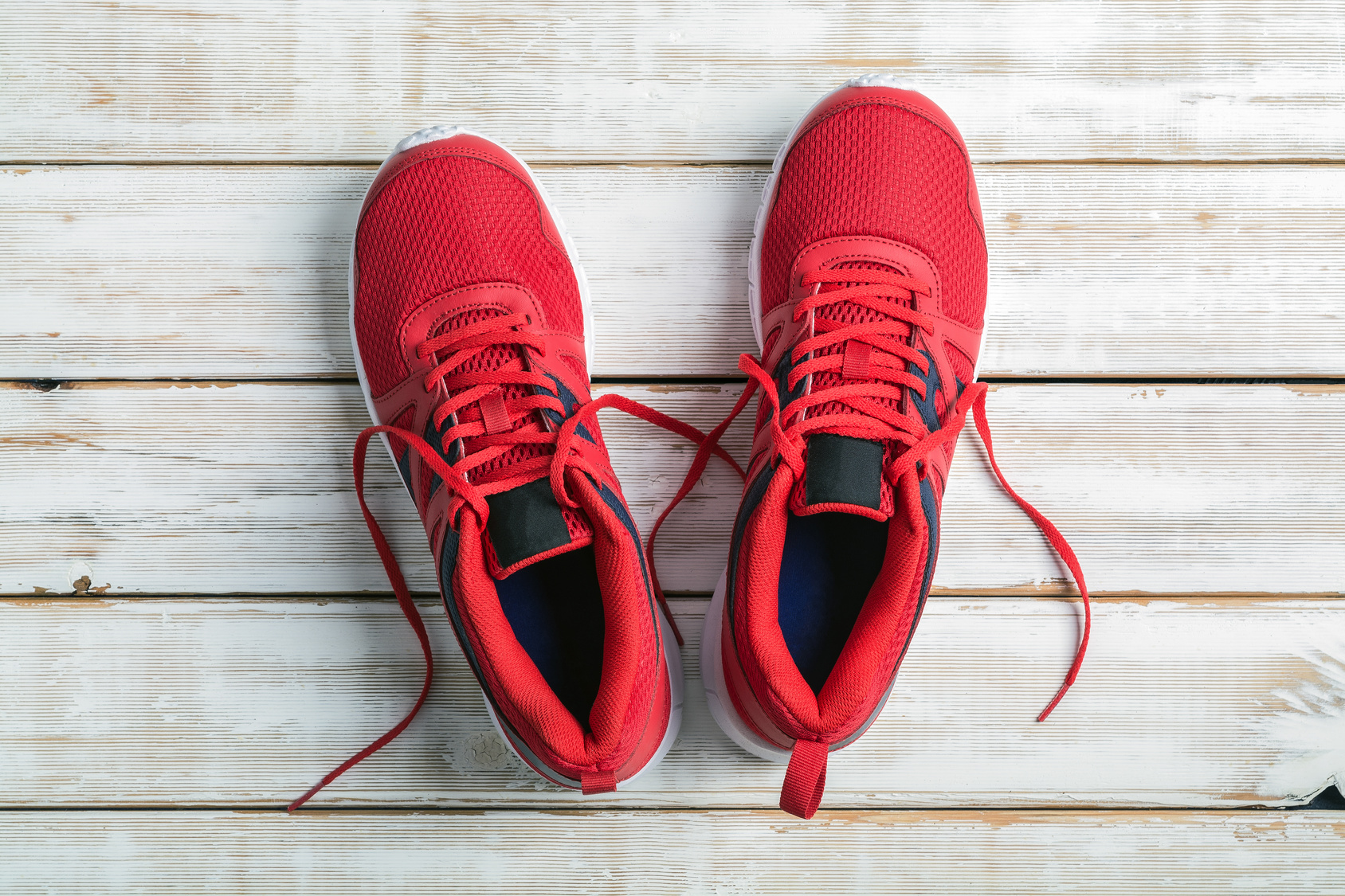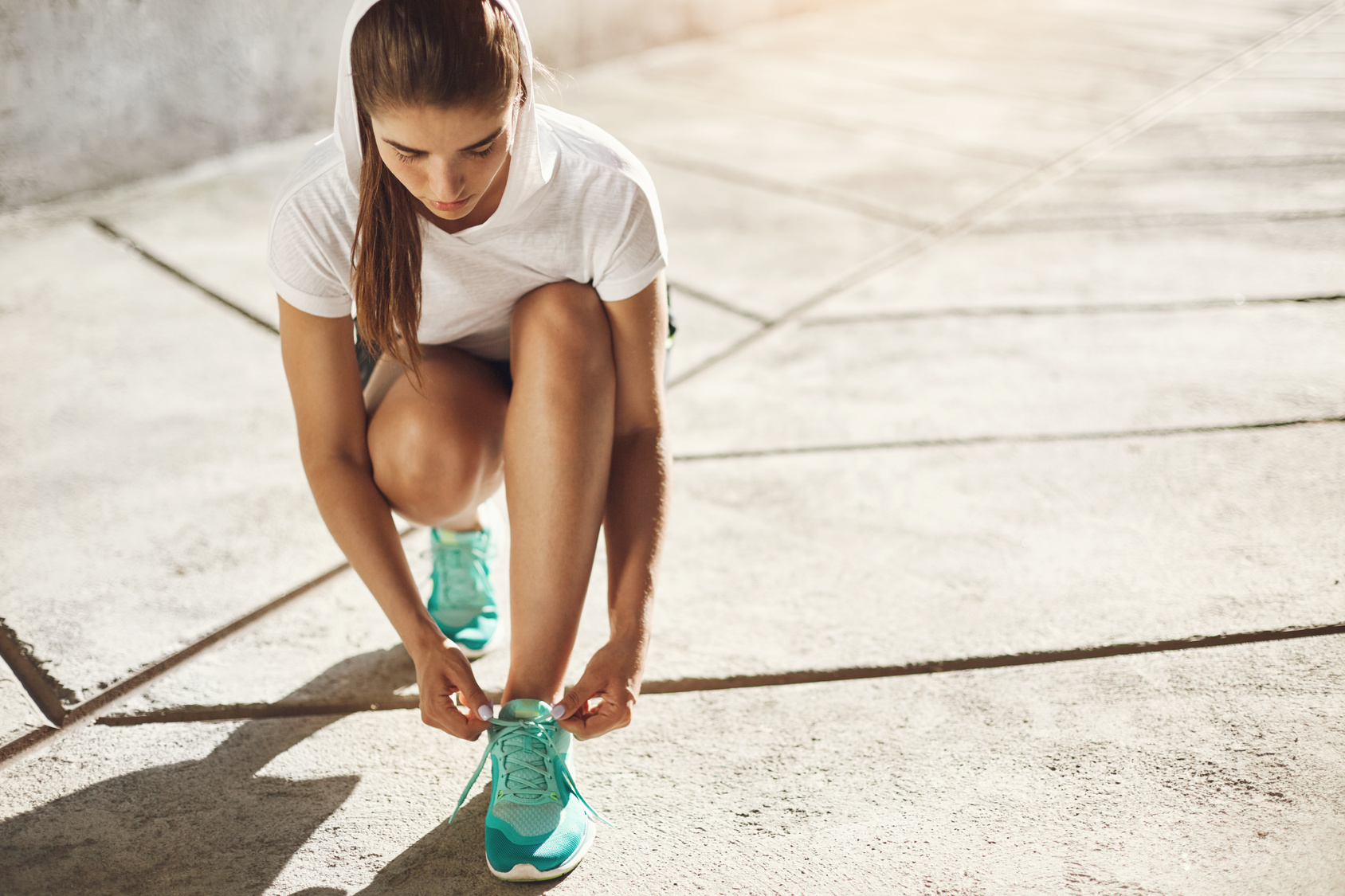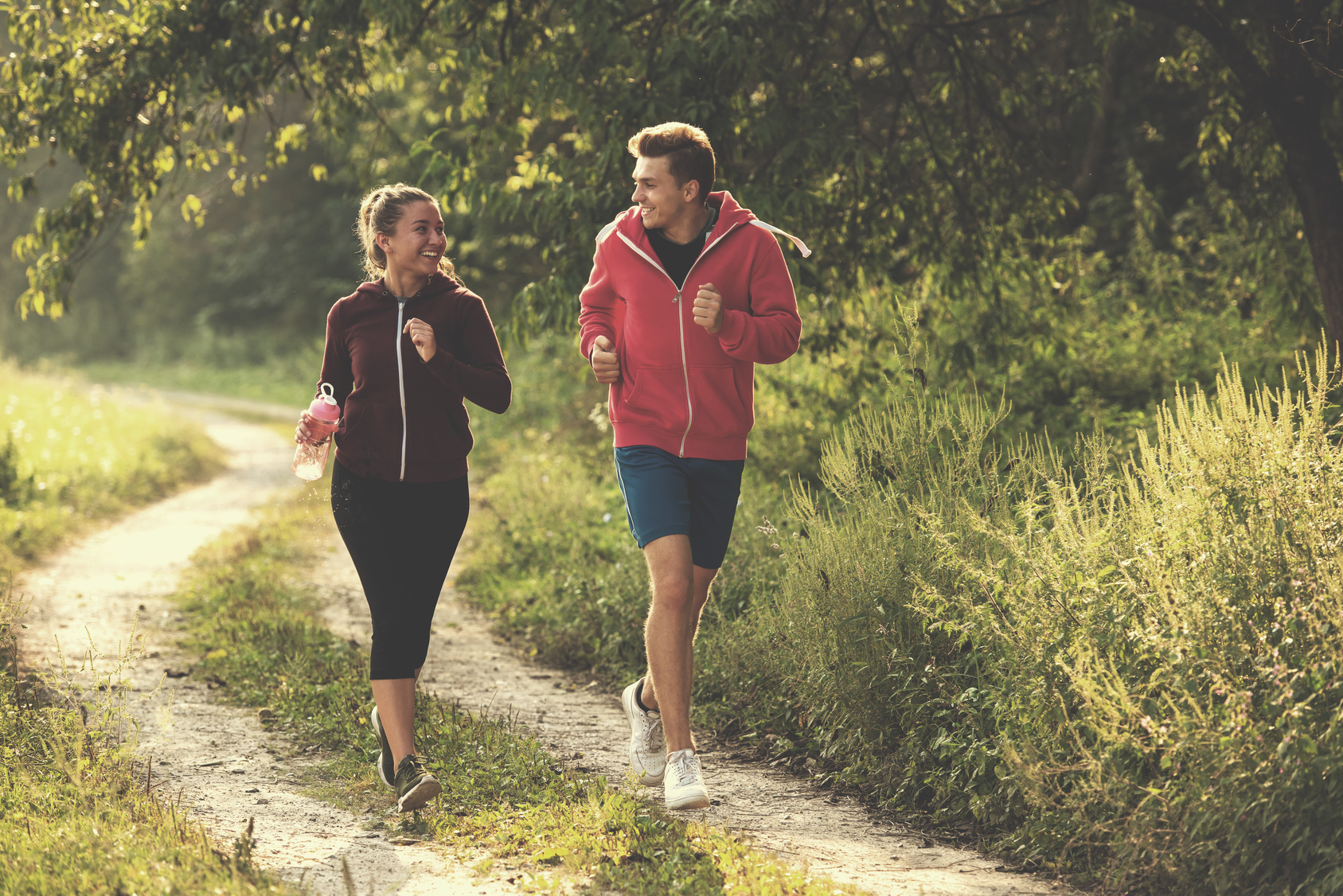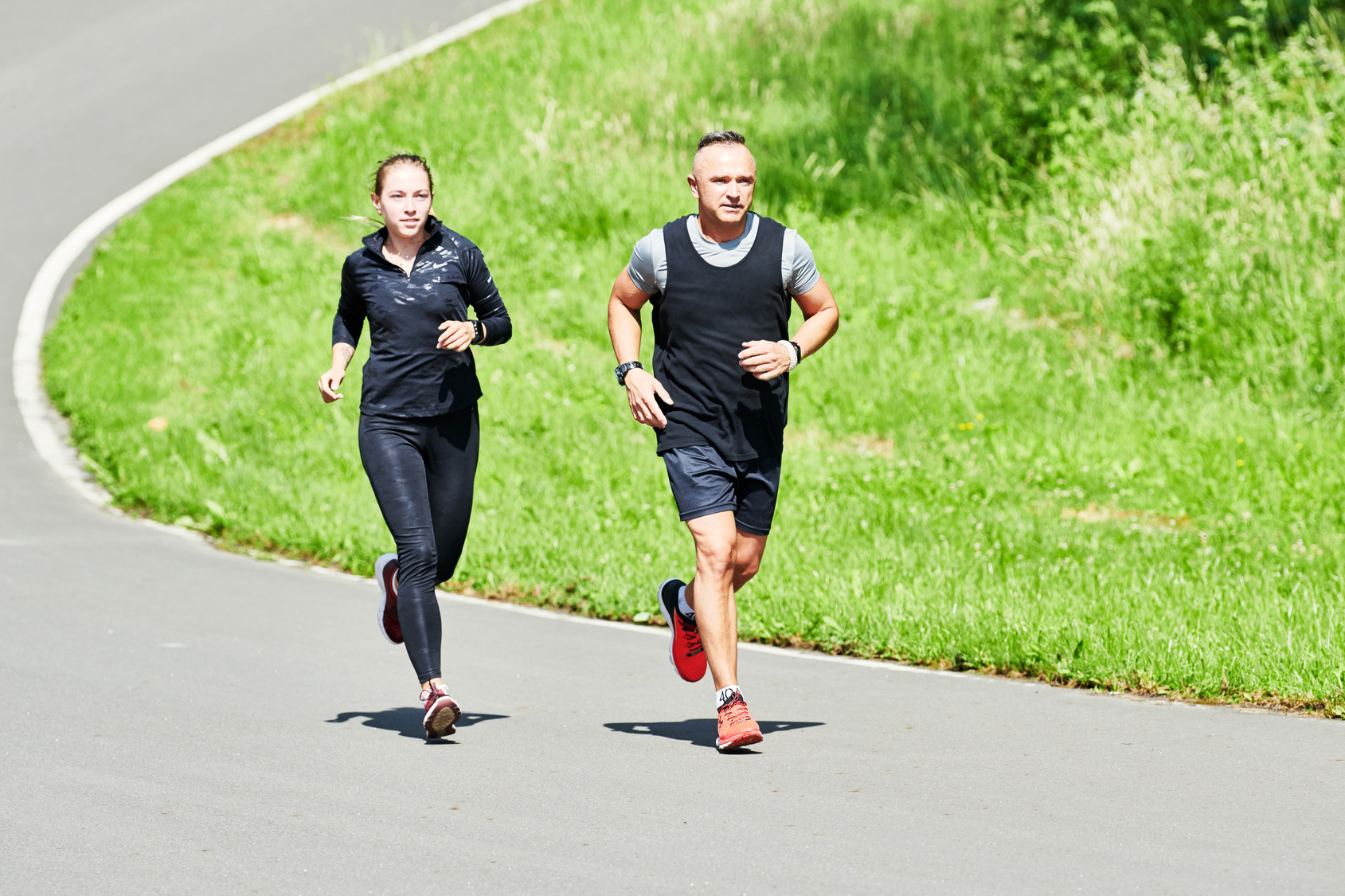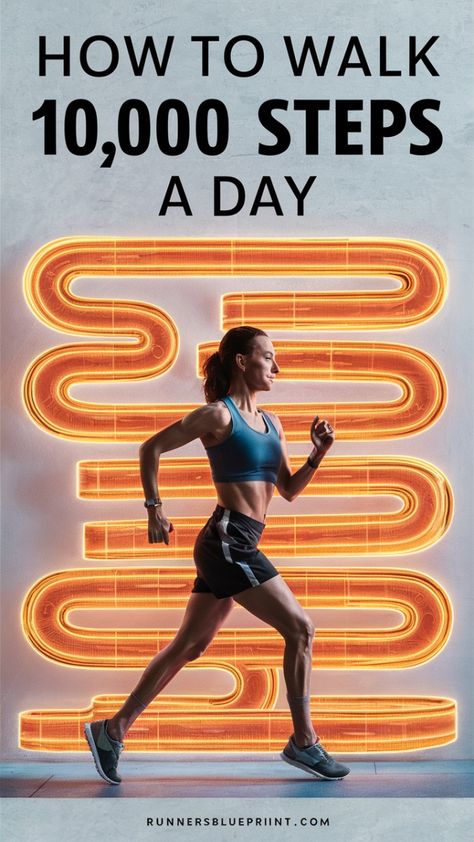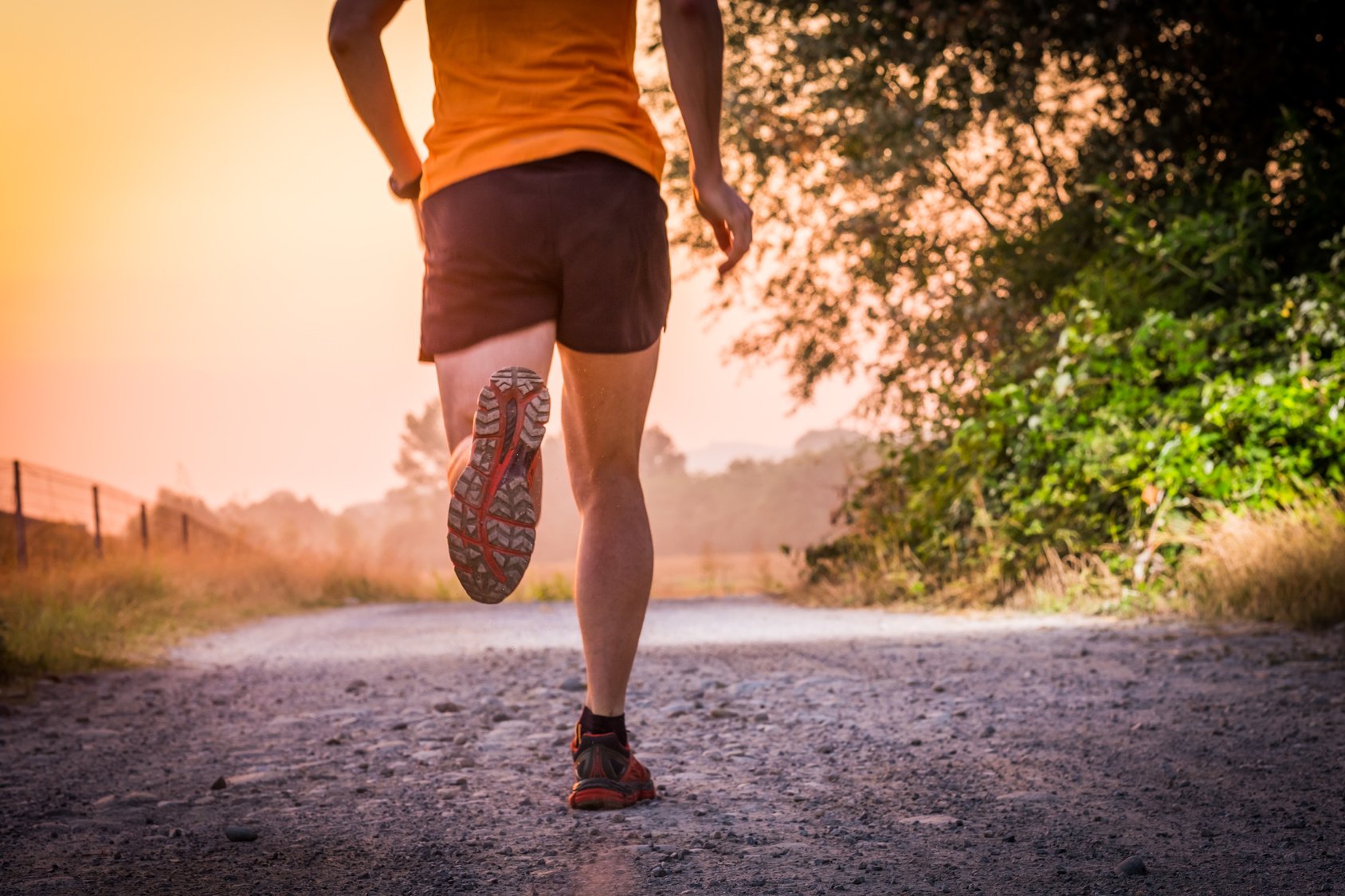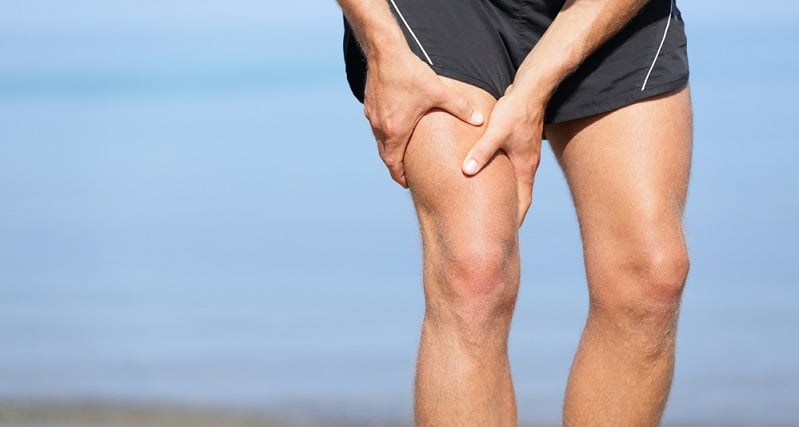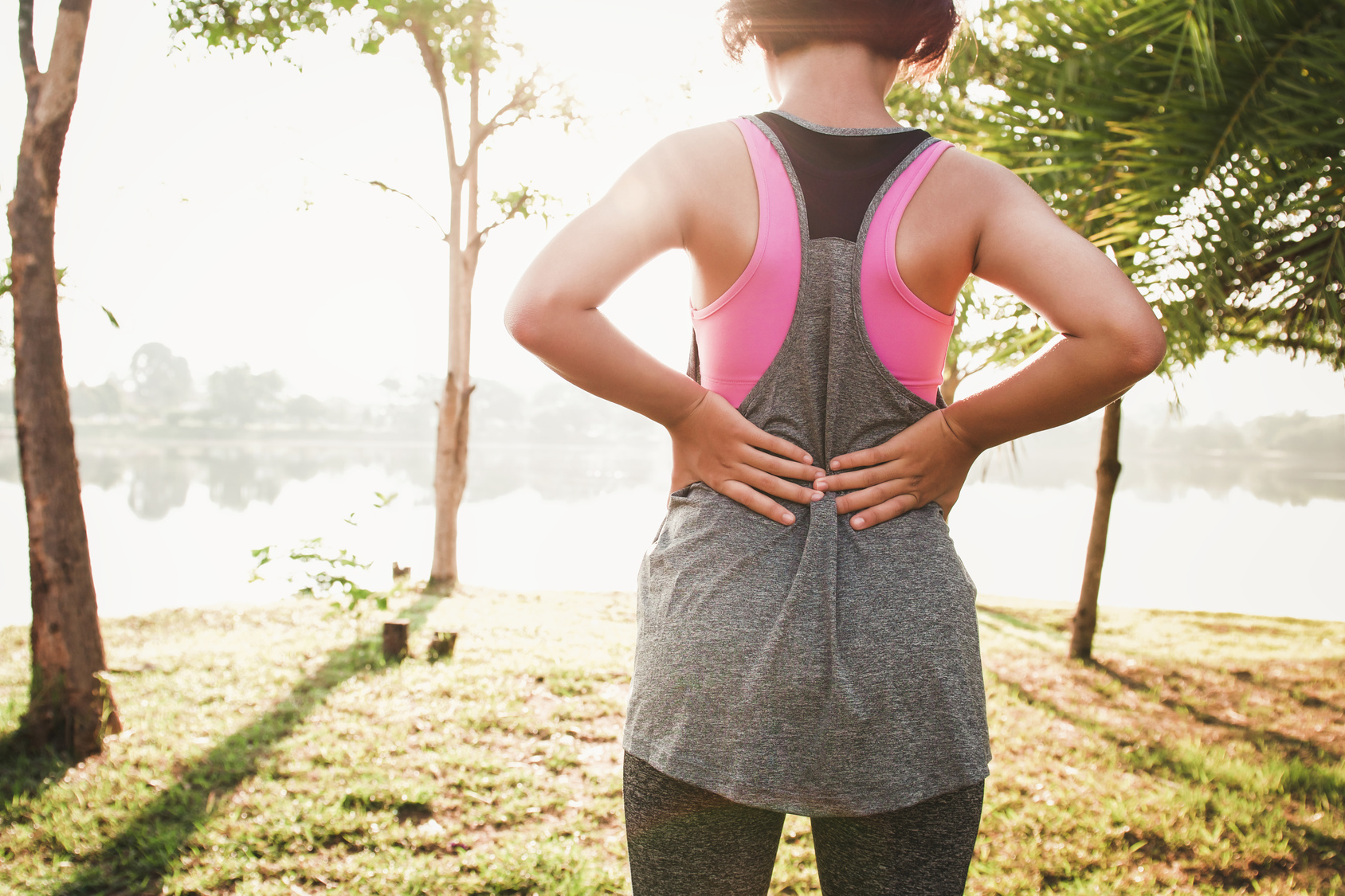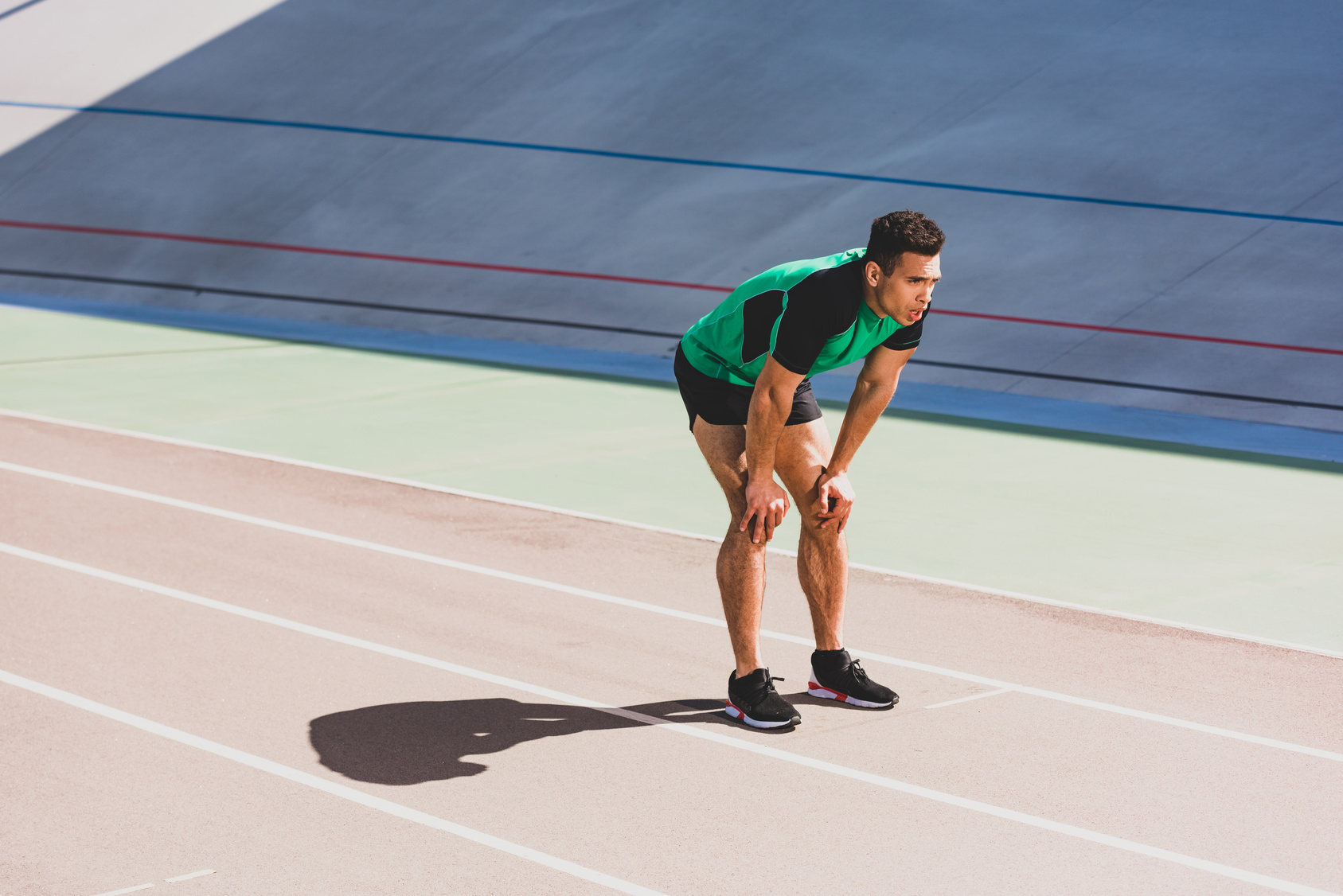Running is awesome. It burns many calories, strengthens the joints, and keeps the crazy away, but there’s a downside: overuse injuries—all of which can be painful, stubborn, and depressing.
Train long enough, and you’ll, sooner or later, pick up one or more injuries.
Don’t take my word for it.
Polls show that roughly 80 percent of runners get injured every year. These are not great odds.
Since we mainly use the lower limbs when logging the miles, most injuries afflict the knees, feet, calves, shin, and ankles. Other weight-bearing limbs, such as the thighs, hips, and back, are also prone to injury.
Here is the good news.
Today, dear reader, I will delve deep into some of the most common running injuries and the best ways to treat and prevent them for good.
But first things first, let’s explain what running injuries are all about.
Note: Before we proceed, I’d like for the record to explicitly state that it’s beyond the scope of this blog post to provide detailed information about sports injuries without knowing all the symptoms. To err on the side of caution, consult a certified sports physician to determine the appropriate treatment options before applying any of the advice shared below.
Overuse Running Injuries Explained
So, what’s a running injury?
“running injury” refers to the injuries that occur during running. You injure yourself whenever you put a particular body part under excessive stress that it can no longer function properly.
No one runner is immune to overuse injury. But most conditions result from poor training practices, lack of conditioning, wrong gear, or biomechanical limitations.
A running injury can force you to reduce your training volume or stop training altogether in cases of severe pain. Injuries can also interfere with how you walk, work, and do everything else.
In other words, the last thing you’d want to run into when logging the miles is a running injury. They suck!
The Most Common Overuse Running injuries
Chronic injuries are, by far, the most common type of injuries, outnumbering acute injuries among runners of every background and training level.
But since they tend to be lower in pain than acute injuries, overuse injuries don’t attract immediate medical attention.
Without further ado, here a list of some of the most common running injuries as well as how to treat and prevent them.
Running Injury. 1 – Achilles Tendinitis
Achilles tendonitis is an inflammation of the Achilles tendon, the largest tendon in the body.
The Injured Part
The Achilles tendon is a major tissue that connects the back of the heel to the two major calf muscles: the Gastrocnemius & Soleus muscles. This vital tendon absorbs several times your body weight on each stride.
The Main Cause of Achilles Tendinitis
The primary cause is repetitive stress to the tendon.. The longer and faster you run, the more stress you put on this tendon. This causes micro-tears to the tendon eventually resulting in tendinopathy. This equals pain—and when severe enough, time off training.
The Stats
According to survey, Achilles Tendinitis makes up roughly 10 percent of all running injuries.
The Contributor Factors
- Increasing weekly training load too fast, especially when it’s more than 10 percent per week.
- Weakness in the posterior chain muscles—the glutes, hamstrings, and calves.
- Tight calf muscles, especially the gastrocnemius muscle.
- Improper running shoes,
- Being overweight.
Symptoms Of Achilles Tendinitis
The main symptom is a tender pain in the lower calf near the heel or on the back—especially when you run, tip-toe, or step out of bed in the morning. The pain can be severe enough to keep you from running.
Achilles tendinitis may manifest as visible swelling or a knot in the affected area. You might also notice strange noises, like cracking or popping, in the tendon when your foot is flexed or pointed.
How To Treat Achilles Tendinitis
If you have Achilles tendinitis, take as many days off as possible. You cannot run through this injury as it will only get worse, which can take more than a few months to fully heal.
Next, apply ice for 10 to 15 minutes on the injured area twice daily.
To soothe the pain, stretch your calves and wear supportive shoes. Research also suggests that compression socks for hard runs relieves and prevents Achilles tightness.
You’ll need clinical treatment for severe cases of the condition. Some options include physical therapy methods of electrical stimulation, such as transcutaneous electrical nerve stimulation (TENS), high-voltage galvanic stimulation (H.V.G.S.), and ultrasound.
How to Prevent Achilles Tendinitis
- Strengthen your posterior muscles. Ideal exercises include eccentric heel drops, calf raises, lunges, squats, deadlifts, and toe walks.
- Stretch your calves. Lift your toes back toward your shin while keeping your heel on the ground the entire time.
- Proper form. Work on improving your foot strike and running cadence. Too hard? Run with a Partner or group and ask for
- Consider wearing orthotics or running in shoes with more support. Steer clear of flip-flops, high heels, or any footwear irritating the Achilles tendon.
Running Injury. 2 –Ankle Sprains
Ankle sprains are an acute, traumatic, injury that plagues the ankle joint. They’re pretty common among runners and athletes who do sports requiring lots of jumping or switching directions.
The Injured Part
There are three grades of ankle sprains. The most common ankle sprain in runners is grade 1 and 2, which consists of a stretched ligament or a partial tear of the anterior talofibular ligament—the ligament in the front and outside of the ankle.
The Main Cause Of Ankle Sprains
Ankle sprains happen when the foot is turning, twisting, or rolling movement. This action stretches the ligament surrounding the ankle beyond its normal range, tearing them in the process.
The Contributor Factors
- Running on uneven surfaces
- Missing the curb
- Tripping over a rock
- Stepping into a pothole
- Landing awkwardly upon foot strike.
The Stats
Roughly 25,000 people sprain their ankles daily, according to the American Academy of Orthopedic Surgeons. Runners are at higher risk.
Symptoms of Ankle Sprains
Ankle sprains manifest as tender pain in the ankles—especially when bearing weight on the injured foot.
Other symptoms include bruising, skin discoloration, and a limited range of motion in the ankle area. In severe cases, this ligament may also tear completely.
How To Treat Ankle Sprains
Ice the injured ankle for 15 to 20 minutes three to four times a day. Focus on the affected part first, then circulate over the swollen area. You can also wrap or compress the ankle with an elastic bandage to ease the inflammation and speed recovery.
During the acute period, consider sleeping with the affected foot elevated higher than your chest.
How long to rest depends on the sprain’s severity, so if the injury lingers for more than two weeks, see a physician for a thorough action plan.
In most cases, your physician might recommend taping the ankle, an air case, or an ankle brace to speed up recovery and/or prevent re-injury as you slowly return to your running routine.
As a cardinal rule, start running again once you:
- can do it pain-free,
- have a full range of motion in the injured joint, and
- the strength of the injured limb is equal to that of the healthy side.
How to Prevent Ankle Sprains
- Strengthen the muscles surrounding your ankle with balance training.
- Run on proper and smooth surfaces, and avoid technical, trail, and terrains, especially if you have a history of ankle sprains.
- Improve your running technique, especially your foot strike patterns and leg turnover.
Running Injury. 3 – Runner’s Knee
Often referred to as Patellofemoral Pain Syndrome, a runner’s knee is associated with pain in the knee and around the kneecap. The injury is the most common cause of knee pain from running.
The Injured Part
This overuse injury is an irritation of the cartilage on the underside of the kneecap. This cartilage is located in the patellar tendon and connects to the quads muscle group.
The Exact Cause
Runner’s knee happens when the patella (the kneecap) fails to move smoothly in the femoral groove at the lower end of the thigh bone. This, in turn, irritates the cartilage on the underside of the kneecap.
The Stats
This notorious knee injury is the most common affliction among runners—from all training backgrounds. Research show that about 40 percent of running injuries are knee injuries—and runners’ knee makes up a large percentage.
According to a runnersworld.com poll, about 13 percent of runners reported knee pain in the past year.
Symptoms Of Runners Knee
Patellofemoral Pain Syndrome manifests as stubborn and tender pain around or behind the patella—usually under the bottom edge of the kneecap. The pain gets worse when:
- Running downhill
- Descending the stairs
- After prolonged sitting
- Squatting
The Contributing Factors
The leading causes of runners’ knees tend to differ from one runner to the next. Some of these include:
- Weak glute, hip, or quad muscles
- Faulty biomechanics, especially Overpronation, is excessive inward foot rolling during a foot strike. This can be congenital or acquired.
- Muscle imbalances
- Too much downhill running
- Improper footwear.
How To Treat Runners Knee
Decrease your running volume by half, avoid running on consecutive days, or take a break from the sport altogether.
Next, ice the affected joint for 10 to 15 minutes, three to four times a day. Aggressive treatment options include using a knee brace and/or knee tape or taking anti-inflammatory medication.
See your physician in case the pain gets worse. Left untreated, runners’ knees can progress into a more serious ailment that may require surgical intervention, such as fracturing or fissuring the kneecap.
How to Prevent Runner’s Knee
- Strengthen your knee’s support muscles, mainly the quadriceps, hip flexors, and glutes. This should help keep your knees tracking correctly over the femoral groove.
- Keep your hamstrings and hip flexors flexible and loose. Try this routine.
- Shorten your stride length while landing with the knee slightly bent. Doing so may take some impact off your knee joint.
- Get proper running shoes. Check this post.
- Stick to flat or uphill terrain, running on softer surfaces whenever possible.
Running Injury. 4 – Stress Fractures
Sure, running is a non-contact sport, but the high-impact nature may “break” your bones in what’s known as a stress fracture.
The Main Cause
Stress fractures are tiny cracks in a bone caused by sub-maximal cumulative stress on the bone. This results from excessive training, forcing the bone to take on greater force than it can handle.

The Injured Part(s)
The injury can strike any bone, but in runners, the most commonly afflicted areas include the main weight-bearing bones, such as the metatarsals – especially the fifth metatarsal, your pinky toe, the tibia—the lower leg bone, and sometimes, but not as often, the femur—anywhere in the upper leg, even the pelvis or sacrum.
Stats
Polls show that stress fractures are behind 6 percent of all running injuries.
Symptoms of Stress Of Stress Fractures
A stress fracture starts as pain around the affected bone that worsens the longer you run but subsides at rest. Tenderness and swelling are also common red flags.
Pain ranges from mild to sufficiently debilitating to stop you from hitting the pavement for weeks, even months.
In advanced cases, stress fractures will make standing on your feet uncomfortable and painful.
The Contributing Factors
- Overtraining, as in doing too much too soon.
- Certain nutrient deficiencies
- Running hard and often on hard surfaces
- Female runners are prone to stress fractures due to inadequate caloric intake, nutritional deficits, and low estrogen levels.
How to Treat Stress Fractures
The first thing to do to give your bones the necessary downtime to recover. You can always use RI.C.E method to speed up recovery and alleviate pain.
In most cases, it might take up to at least six to eight weeks to achieve full recovery—depending, of course, on how severely you were injured.
During the downtime, cross-train. Aqua jogging, yoga, and low-intensity cycling are good options.
You can return to your former running routine once you can jog pain-free with no lingering pain.
But if pain persists, back off. In extreme cases, you might need to run some tests to see if it’s time for medical intervention.
Additional reading – How to Prevent Running Injury
How to Prevent Stress Fractures
- Wear the right running shoes
- Strength train regularly. Try this routine
- Run on soft surfaces like grass and dirt trails and steer clear of harder surfaces such as asphalt and sidewalks.
- Consume enough nutrients—especially calcium, to keep your bones strong.
- Doing plenty of non-weight-bearing cross-training exercises like swimming, cycling, or yoga.
Running Injury. 5 – Iliotibial Band Syndrome (ITBS)
Also known as I.T.B.S., Iliotibial band syndrome is an inflammation of the IT band.
The Injured Part
The Iliotibial band is a thick piece of connective tissue stretching from the pelvic bone down your thighs.
The Main Cause
When you run or perform any knee-bending movement, your IT band rubs on the side of the femur to help your knee flex and extend.
Do this for an extended period, and the action can lead to irritation that results in pain and inflammation.
Stats
According to the survey, iliotibial band syndrome makes up roughly 12 percent of all running injuries, making it the fourth most common ailment in the running world.
Symptoms of Iliotibial Band Syndrome
I.T.B.S. manifests as intense pain around the outside of the hip or knee that’s felt down the leg—especially when running downhill or while using the stairs.
At the first stage of the condition, you might feel a sensation of stinging on the outside of the knee—mimicking a knee injury, but still, I.T.B.S. is completely different.
The Contributing Factors
- Doing too much too soon
- Weakness in the hip abductor and gluteal—butt—muscles
- Runners with leg-length discrepancies or those who overpronate
- Runners with a B.M.I. of 25 or higher who do a weekly run of two hours or more.
How to Treat Iliotibial Band Syndrome
At the first sign of trouble, reduce your mileage by 50 percent for a couple of weeks, and you could prevent serious injury. But, on the other hand, you’ll do nothing but exacerbate injury if you ignore the warning signs and keep running at your typical mileage.
Use the R.I.C.E method as long as there is pain. Then, consider booking a physio appointment or using NSAIDs when the pain is too much to handle—especially if you start experiencing it on the outside of your knee.
Avoid abusing pills just because you’re too lazy to make an appointment.
Stretching and foam rolling may also help you relieve pain.
During the recovery period, you can cross-train by opting for low-impact activities, like swimming, biking, pool running, and yoga, to help keep your fitness base. Then, start again only when you’re ready.
How To Prevent Iliotibial Band Syndrome
- Add hip abductor strength exercise to your resistance training. These include side leg lifts, lateral side steps, and one-legged squats.
- Perform a proper warm-up before every run.
- Shorten your stride and increase your cadence turnover
- Respect the 10% rule.
- Use a foam roller to loosen the band and roll out the sides of your hips, which can help break up the tissue knots in the area.
Running Injury. 6 – Plantar Fasciitis
Plantar fasciitis is the inflammation of the plantar fascia.
The Injury Part
The plantar fascia is a thick band of ligaments and tendons that covers the bones along the bottom of the foot. This band of tissue runs from the heel to the toes, joining the heel and forefoot and providing arch support.
The Stats
Plantar Fasciitis is one of the most common culprits of heel pain in runners and amounts to roughly 10 to 15 percent of all running injuries. A poll run by runnersworld.com revealed that up to 10 percent of its readers suffered from this injury this past year
Symptoms of Plantar Fasciitis
The common symptom of plantar fasciitis is a tight, tender sensation at the heel’s base that can range from irritating to excruciating. Most runners describe the pain as stepping heel-first onto a nail or walking on glass.
The Main Factors
- Weakness and/or dysfunction in the muscles of the foot may force the heel to take in more load than it can handle
- Standing for extended periods, especially on hard surfaces without supportive footwear.
- Runners with abnormal feet—those with a high or low arch
- Overpronation—the excessive inward roll of the foot during a foot strike, and supination—the excessive outward roll
- Prolonged periods of standing, typically on hard surfaces without supportive footwear.
How to Treat Plantar Fasciitis
Step back from running, especially if the pain is severe, and stretch the fascia tissue at least a couple of times per week.
Preferably, roll your injured foot over a tennis ball or a frozen water bottle for a few minutes, five times a day. A foam roller also helps loosen up the plantar fascia.
Stability shoes and orthotics can also help limit symptoms and hasten recovery, but they’re not a permanent fix, so don’t always rely on them.
Try stretching. This simple stretch can help. Doesn’t have to be with a strap at first.
If the pain persists, see a physician. They might suggest putting on custom-made orthotics or a night splint to speed up recovery.
How to Prevent Plantar Fasciitis
- Stretch your plantar fascia and calves consistently—especially when running in the morning, as the fascia tends to tighten overnight.
- Improve your core strength—especially if you have a bad injury history.
- Strengthen your calves with heel raises, toe raises, and eccentric heel drops.
- Avoid using high heels or flip-flops, which can irritate this band of tissue and shorten the calf muscles.
- Run in the right shoes. And stick to the 10% rules.
- Improve your running form.
Running Injury. 7 – Shin Splints
Also known as medial tibial stress syndrome, shin splints are an inflammation of the tissues around the shinbone.
The Exact cause
This overuse injury is caused by microtrauma to the connective tissues located in the front portion of the lower leg.
The Injured Part
Shin splints are an inflammation of the tendons and/or muscles around the tibia—shinbone.
Stats
Shin splints are common among beginners and those returning to the sport after an extended layoff. Surveys show that it accounts for 15 to 20 percent of all running injuries.
Symptoms Of Shin Splints
Medial tibial stress syndrome manifests as aching, stabbing pain felt along the inside front of the lower leg, roughly halfway down the shin, or all along the bone—especially during the first few miles of a run.
The pain can range from mild to excruciating and can be felt in both the front and the outer portion of the shin. It may start as mild numbness or tingling along the shin, felt only when running. Then, over time, the pain may progress to a stubborn irritation noticeable at rest.
The Contributing Factors
- Drastic changes in training volume before your body is prepared to handle the new stress, especially sprint training.
- Running in the wrong and/or excessively worn shoes.
- Running on hard and/or cambered—slightly arched—terrains
- Having high arches or flat feet (it’s not your fault, I know).
How To Treat Shin Splints
At the first sign of pain, reduce your volume for at least a couple of weeks before slowly ramping it up as long as you can do it pain-free. Running through pain might eventually lead to a stress fracture, and you don’t want that.
Next, ice the injured shin for 15 to 20 minutes daily and keep it elevated at night to ease swelling.
Regular stretching might also help, as well as taking over-the-counter anti-inflammatory drugs, using Kinesio tape, or running with neoprene sleeves.
During the “relative rest” day, you can swim, bike, pool run, or do yoga if you don’t want to lose fitness. Avoid weight-bearing during your rest days.
Return to running pain-free once you can—even long after you stop applying the RICE method. If the problem persists for longer than a month, see a physician for a thorough examination of the entire shin bone.
How To Prevent Shin Splints
- Increase training volume gradually and slowly.
- Do anterior tibialis muscle exercises. These include toe taps and heel walks.
- Get more calcium and Vitamin D.
- Strengthen your calves with toe raises, eccentric heel drops, and calf raises.
- For runners with flat feet, orthotics might help but talk to your doctor before you make any decisions.
- Strengthen the anterior tibialis muscle on the front of your shin. Good exercises include heel walks and toe taps.
- Try compression running socks.
Running Injury. 8 – Patellar Tendinitis
Also known as “Jumper’s knee,” patellar tendinitis is an inflammation of the patellar tendon.
The Injured Part
The patellar tendon runs from the kneecap to the top of the tibia. This vital tendon assists leg extension during running and other knee-bending motions.
The Exact Cause
The repeated high-impact nature of running might place too much stress on the patella, resulting in small tears in the tendon, leading to pain and swelling.
Stats
Research show that the condition has a prevalence of 11 percent
Symptoms of Patellar Tendinitis
To be precise, patellar tendonitis pain is felt at the bottom of the kneecap—directly over the patellar tendon. However, the tenderness might take place anywhere along this structure.
The pain is worse when making knee-bending activities, such as kneeling, squatting, sitting, jumping, or ascending stairs.
The Contributing Factors
- Overtraining
- Too much hill training
- Running on uneven or slanted surfaces.
- Overpronation (and other biomechanical challenges)
How to Treat Patellar Tendinitis
Take a step back from high-impact training to provide your body with enough recovery time.
Step back from your running and/or drastically reduce your weekly mileage- even stop it all at once, giving your body the time it needs to end the acute phase and begin the healing process properly.
Next, ice the affected area for 15 to 20 minutes three to four times per day
Return slowly and gradually to your previous training volume once you’re pain-free.
How To Prevent Patellar Tendinitis
- Strengthen the muscles surrounding your knees, mainly the quads, hamstring, and calves, to provide more support to the patellar tendon.
- Increase your mileage by no more than 10 percent from one week to the next, making sure to make a recovery a priority here.
- Keep your calves and hamstrings loose and flexible.
Running Injury. 9 – Muscle Strains
Muscle strains are common among athletes from all backgrounds and training levels—runners are no exceptions.
Muscle pulls in runners usually affect these muscles:
- Hamstrings
- Quadriceps
- Calves
The most common type that plagues runners is hamstrings strains, the muscles running down the back of the thigh.
Remember that the same advice applies to most other running-induced muscle pains.
The Injured Part
Hamstring strains refer to a slight tear or overextension of one or more of the three muscles in the back of the thigh (the semitendinosus, the semimembranosus, and the biceps femoris), all of which are in charge of bending the knee.
The Contributing Factors
Beginner runners are more prone to muscle strains because their muscles are not used to the high-impact nature of the sport.
If you do any sprinting or a lot of speedwork, then you are more likely to get the condition. Other causes of the condition include skipping a warm-up, and doing too much too soon.
Symptoms of Muscle Strains
Hamstrings strains manifest as tender stiffness and pain along the back of the thigh, especially when trying to stretch the muscle, speeding up or slowing down while running, or sometimes, anytime you perform any knee-bending activity.
How to Treat Muscle Strains
Most hamstring strains can be treated at home. It’s not as bad as a sprain, leading to the ligament’s tearing. If you have just strained your hamstrings, stop running immediately, and apply the RICE method on the spot.
Take a couple of days off (or more) from running, ice the painful area for 15 to 20 minutes a couple of times a day, and keep the injured leg elevated on a pillow to speed up recovery and reduce swelling.
Recovery time varies from one runner to the next, taking anything from two weeks to three months, depending on how serious the muscle strain is.
How to Prevent Muscle Strains
- Start all of your runs with a proper warm-up.
- If you plan to do a sprint or speedwork session, do 15 to 20 minutes in a dynamic warm-up comprising light jogging, and dynamic exercises, such as inchworms, squats, and lunges.
- Improve your flexibility and mobility in the posterior muscles and tendons, so your hamstrings are no longer prone to being strained or overstretched.
Additional resource – How to stop runners toes
More Injuries and Pains To Deal With When Exercising
The above list only covers a small portion of injuries you can encounter when exercising regularly. So, as a bonus, I decided to share a few more so you can protect yourself out there, whether when running or cross-training.
Enjoy!
Blisters
Running blisters consist of fluid-filled sacks on the skin’s surface. This quite annoying condition is caused by friction between your running shoes or the sock and your skin.
Prevent it
Reduce friction by applying lubricant, such as petroleum jelly, on areas prone to blisters. You should also wear properly fitting shoes as well as running-specific socks. For extra protection, consider doubling on the socks or even throwing the old socks away regularly every time you start to feel them stretched too much.
Pectoral Injury
A very common injury among strength nuts. The injury is often caused when trying to lift a weight heavier than normal, resulting in -a tear of one of the chest muscles or its tendons.
Prevent it
Warm up and stretch out your pectorals before working out. Make sure the core is active. Only work with a weight you can control—you will know it’s too heavy when your form starts to break down— and use a spotter for intense sets. Then, you train for your own, don’t be a shower.
Bicep Tendon Rupture
Attempting to curl a too-heavy weight or suddenly dropping the dumbbell can cause a tear in the bicep tendon, which is the tendon attaching your biceps muscle to bones in the shoulder and the elbow.
Prevent it
Use a weight that you can handle throughout with proper form. For heavy sets, call out for the help of a spotter.
Sternum Fracture
Being unable to lift a bar when bench pressing to the safety point can cause a sternum fracture, a break in the sternum bone situated at the front of the chest. This injury is one of the most dreadful and common gym nightmares.
Prevent it
Work on developing proper lifting techniques, load the bar with weights you know you can handle, and always use a spotter to help you through your heavy sets.
Hamstrings Strains
Hamstrings strains happen for two main reasons: improper form and strength imbalances. But, unfortunately, it’s also very rampant among runners.
As you boost your speed, you also extend your stride, which puts excessive pressure on the hamstrings.
Prevent it
Address any possible muscle imbalances in your lower body. If you don’t know or don’t notice it, seek help from your physical therapist to analyze your form. Make sure also to use proper form—especially when running.
Joint Dislocation
Opting for too much weight and/or improper lifting form can cause a dislocated knee, hand, elbow, or shoulder.
If you put too much pressure on a ligament without a proper form, you will force the bone out of its regular position, leading to serious injury.
Prevent it
Be mindful of your joints and their range of motion. Work on developing mobility and aim to correct muscle imbalances.
Develop good form and only use weights you can handle without putting the joint under too much pressure. Keep the alignment good.
Running Injuries – The Conclusion
There you have it! If you’re looking for a comprehensive list of overuse injuries that afflict runners, then my article should get you started on the right path. The rest is just details.
Please feel free to leave your comments and questions below.
In the meantime thank you for dropping by.
David D.

